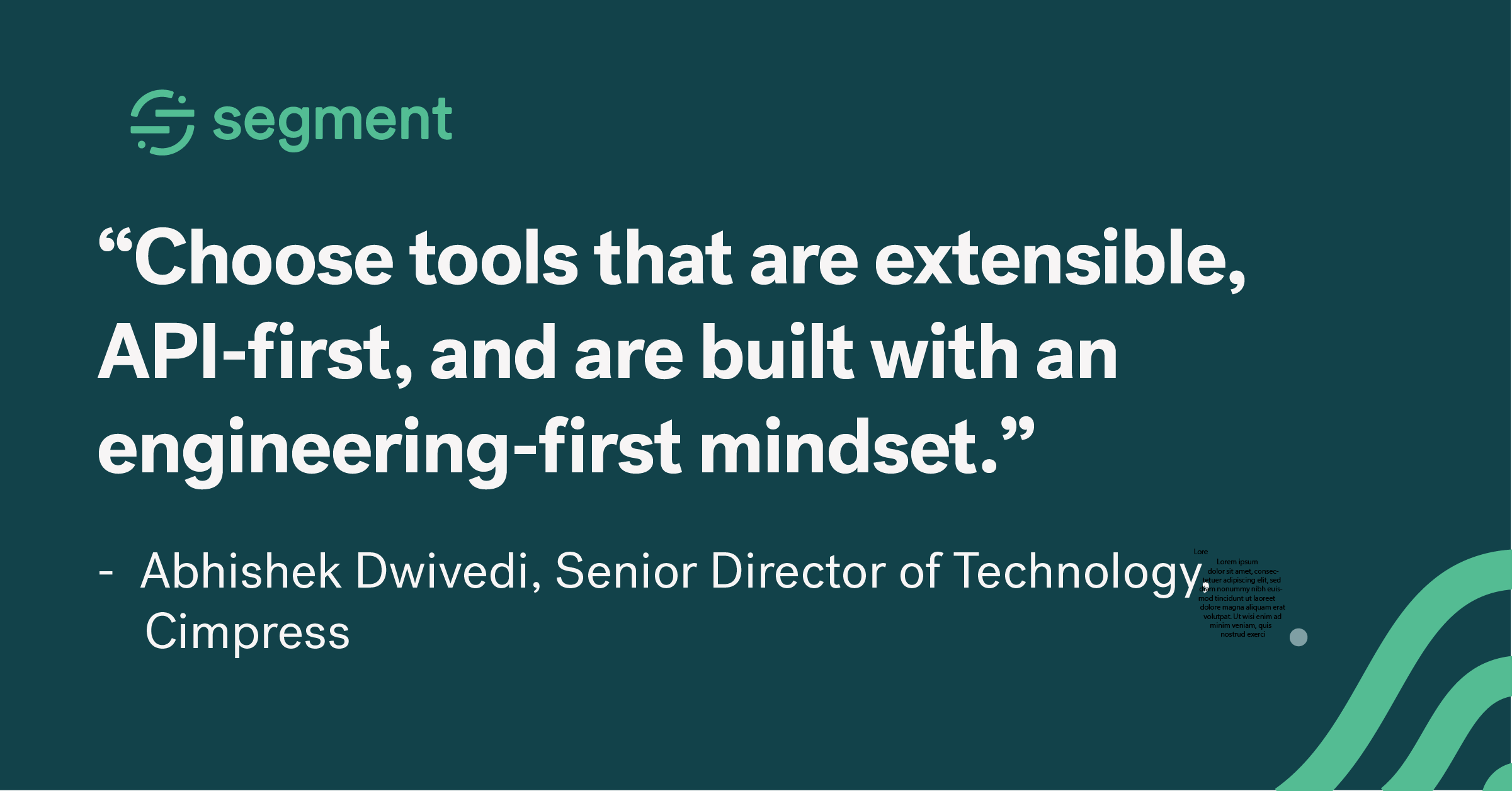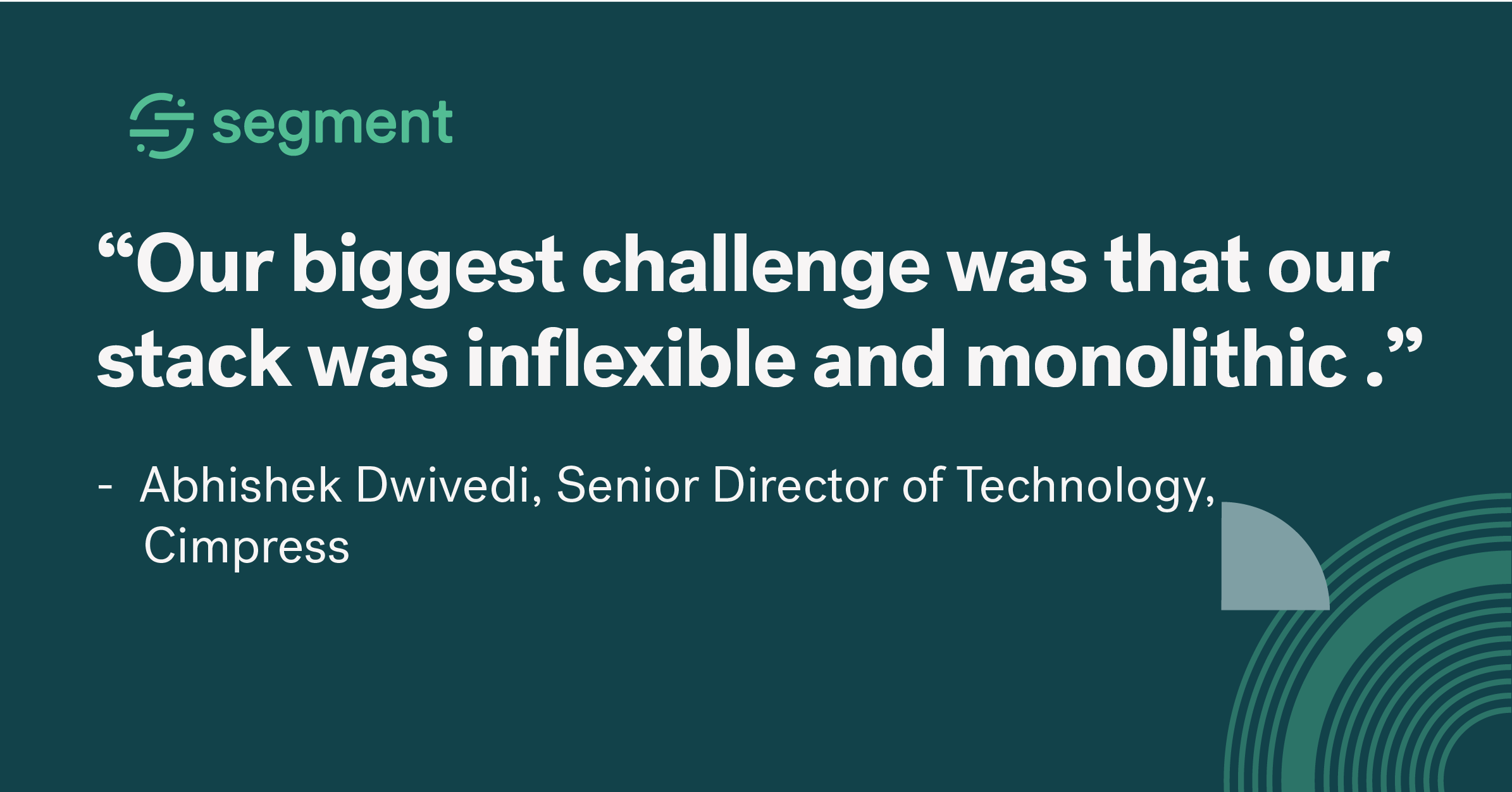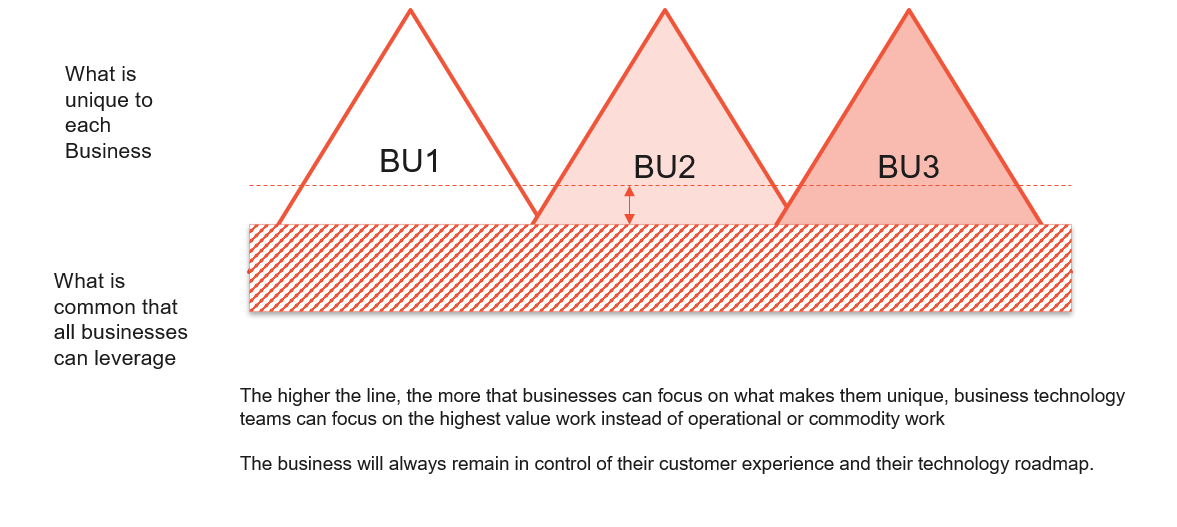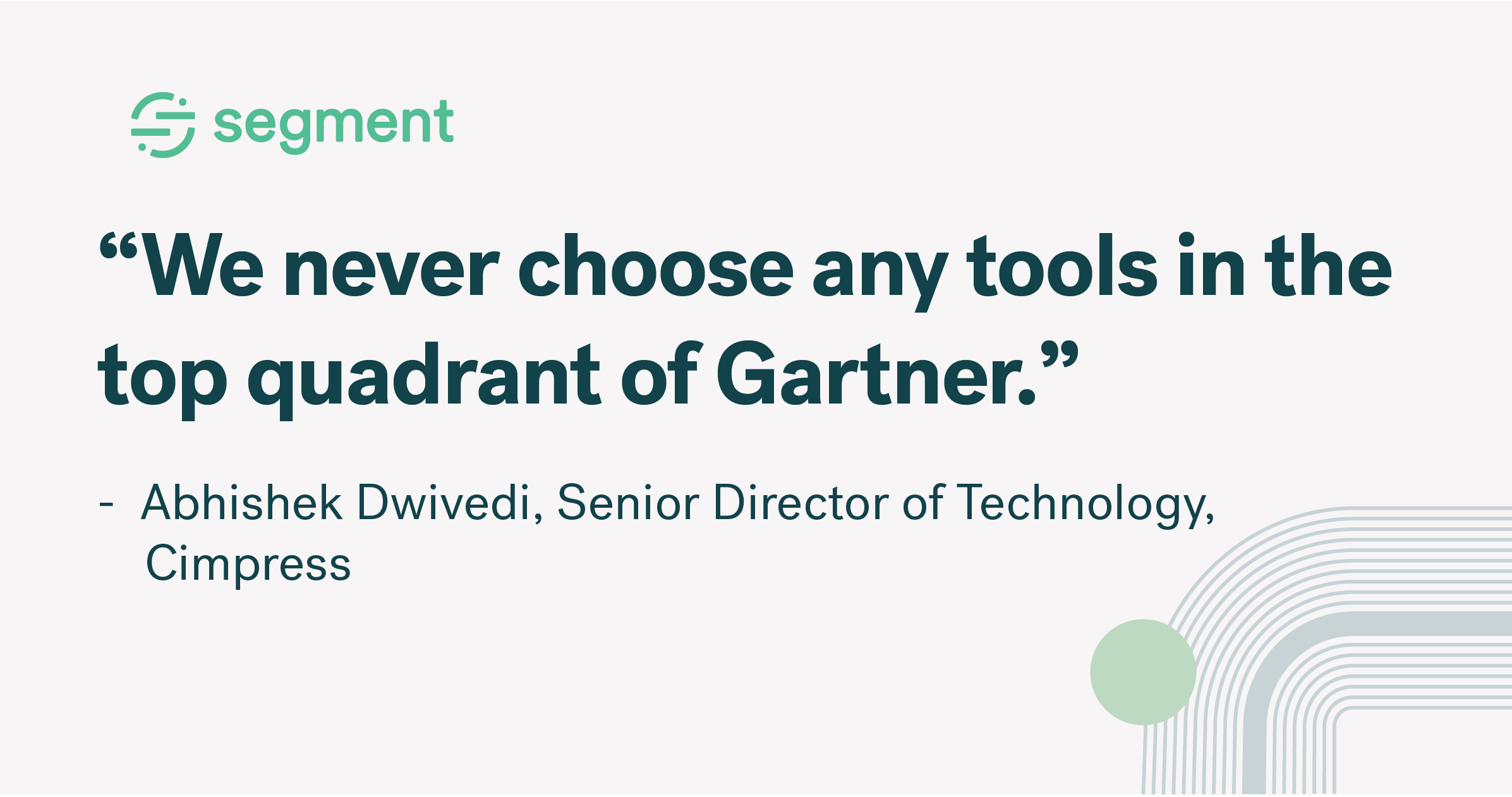When you’re the parent company of multiple brands around the world (and investing in new acquisitions all the time), it can be a balancing act to know how to build a tech stack and manage it across your global brands.
Should you enforce a particular set of tools globally? Or should you let each of your businesses build or buy their own solutions as their individual geographies and needs dictate?
As Cimpress has learned, the answer is a little of both. The publicly traded mass-customization conglomerate owns brands all over the globe such as Vistaprint (in The Netherlands), Pixartprinting (in Italy), and BuildASign (in Texas) and operates manufacturing plants on every major continent. With more than 10,000 employees and a $3.11 billion market cap, the stakes are high.
At such a massive scale, it can be helpful to develop a set of design principles that can guide your decision-making. For Cimpress, there are two golden rules: 1) choose tech solutions made by challengers and visionaries with an extensible, API-first mindset, and 2) avoid legacy companies that might be lagging behind as they try to evolve their monolithic platforms.
We sat down with Abhishek Dwivedi, Cimpress India’s Senior Director of Technology, to learn more about how he walks the technological tightrope between centralizing and decentralizing the parent company’s software offering.
As a product development veteran of companies such as AOL, Oracle, and Anthelio Healthcare Solutions, Abhishek has had nearly two decades of experience sifting through the 21st century’s shifting software landscape. He became the Head of Technology for Vistaprint India in 2012, just two years before it was acquired by Cimpress.
Today, he’s responsible for tracking down best-of-breed solutions and figuring out how to leverage them for cross-platform integration, machine learning, and cloud infrastructure.
We’re excited to share how companies like Vistaprint empower teams and deliver real-time customized experiences for customers using Segment and Amazon Personalize.

This is the second in a series of real-life stories from leaders who have seen their stacks evolve in extraordinary ways. (Check out our interviews with Frame.io and Datadog about how they evaluate key technology choices.)
Our chat with Abhishek ran the gamut:
-
The difficulty of using a cookie-cutter approach for brands with diverse business models
-
Why Cimpress looks for “thought partners”: companies that are willing to listen and adopt design inputs instead of simply being vendors
-
How his team creates a mesh of services to address data infrastructure, visualization and distributed microservices
-
How following the concept of a minimum viable product helps them understand their customers’ journey at a high level and evaluate the technology they need to serve them best
Dive into the interview below.
How Cimpress’s stack evolved
Geoffrey: What sort of technologies were in place when you first started at Cimpress? What was working? What was not?
Abhishek: When I joined Cimpress, it was just one entity – Vistaprint. I joined in 2012 as head of technology because they were rolling out the Vistaprint brand in India.
Technology at that point took a cookie-cutter approach: you are in X country, and you decide that you want to be in Y country, so you would just basically copy the tech stack of X country and apply it to Y.
We had no way to help you adapt to the customer journey in that locale. That was a big, big challenge for us, because the stack was inflexible and monolithic in nature. You could neither extend it nor change it to impact the customer journey.
Geoffrey: So technology was centralized? How much flexibility did different locales have?
Abhishek: The company started in 1994, 25 years ago. When the company started, it was great for US markets, where the highest level of flexibility was available. You could be in one market and have a monolithic stack.
But when you start experimenting in Europe or Pan-Asian markets, things get harder. You had to move from a world where everything was centralized to a multi-brand, multi-country strategy.
Different regions want to take control of their own technology, but since the stack was monolithic, the level of control they had was actually very, very limited.

Geoffrey: What were the triggers that caused your stack to change from this cookie-cutter approach to where you are today?
Abhishek: We started to evolve as an organization for two big reasons. One: we wanted to go global, which meant we needed to be present in Asia. Being in the US and Europe doesn't make you global. That isn’t just limited to rolling out technology specific to each region. It also expands into marketing activities, plant operations, logistics, and so on and so forth.
The second trigger was that we started to make a slew of acquisitions in early 2013. We started to realize that a multi-brand, multi-country strategy would require flexibility on a per-region basis, but also a certain level of commonality in logistics, fulfillment, network, routing, and so forth.
Let me explain.
Within each region, there is some uniqueness. Is it B2B, B2C, or both? Is it a reseller? Are there closed borders, wide borders? Each region will have a unique way to bring a product to the market.
However, there are also commonalities that each region needs from its technology. There is a common set of things a business like Cimpress can offer to its subsidiaries. This cuts down their total cost of ownership and means they don’t have to execute a technology strategy completely independently.
Geoffrey: I'm guessing that when you acquired a company, you acquired their technology stacks as well.
Abhishek: Yes, we acquired the whole company. Getting all of them under one technology umbrella was a hard task.
This is actually how Cimpress came into being. As a holding company, we said: “Okay, we will invest in legal, finance, supply chain, and technology. This tech will basically power the platform on top of which these different businesses sit.”
We have created a level playing field for these businesses. Businesses can leverage the Cimpress technology platform, but at the same time, we preserve their brand identity, fuel their growth, and help them expand in a cost-effective manner.
You could describe it as decentralization with the support of a centralized platform.
Think of it as a pyramid.

What is common between the businesses for leverage? And what is unique for the businesses to deploy themselves? But some of the businesses have their own customer experience and their own technology.
Geoffrey: On a tactical basis, how do you keep data in-sync across all these different teams and tools and technologies?
Abhishek: Primarily through two things. Firstly, through event-driven infrastructure and microservices. Secondly, though common data infrastructure and data warehouses that we provide to our businesses. We also provide a lot of central tooling. like visualization architecture. We give you things you might not want to invest in, but you’re free to leverage them for your own needs.
Geoffrey: How does Segment fit into your stack specifically?
Abhishek: There are two locales in Europe that are using Segment. It is very clear that they understand Segment's potential, and are looking to harness it in new ways.
They have just introduced a Google Analytics integration with clickstream data coming into Segment. Soon, we’ll be able to tap into much more, like server-side data, events, etc.
Now that they’ve realized the potential of Segment, we want to move strategically into the area of identity resolution. This is the product within Segment where there is huge leverage for a business like ours that has analytics, marketers, engineering teams, and many different channels. These different units can then come together around Segment.
There’s big potential here in areas such as customer care, where we’re trying to realize identity and clickstream behavior while interacting with the customer.

Geoffrey: Obviously Cimpress is a fast-growing company. With that in mind, how do you ensure the tools you choose today can grow with you over the course of 12 or 18 months?
Abhishek: The one golden rule is that we never choose anybody in the top quadrant of Gartner or Forrester. We tend to choose people who are challengers and visionaries, because they are new-age, and they are not trying to refactor their platform from being monolithic to API-first.
The second rule comes down to our technology design principles. The technology we adopt should be extensible, it should be API first, and there should be an engineering-first mindset. If you take Segment, if you take Algolia, these are all engineering-first, API-first products. These company’s investments are in tech, and their core values are geared toward doing one thing as opposed to doing all the things (and not being good at anything).

The State of Personalization 2023
Our annual look at how attitudes, preferences, and experiences with personalization have evolved over the past year.